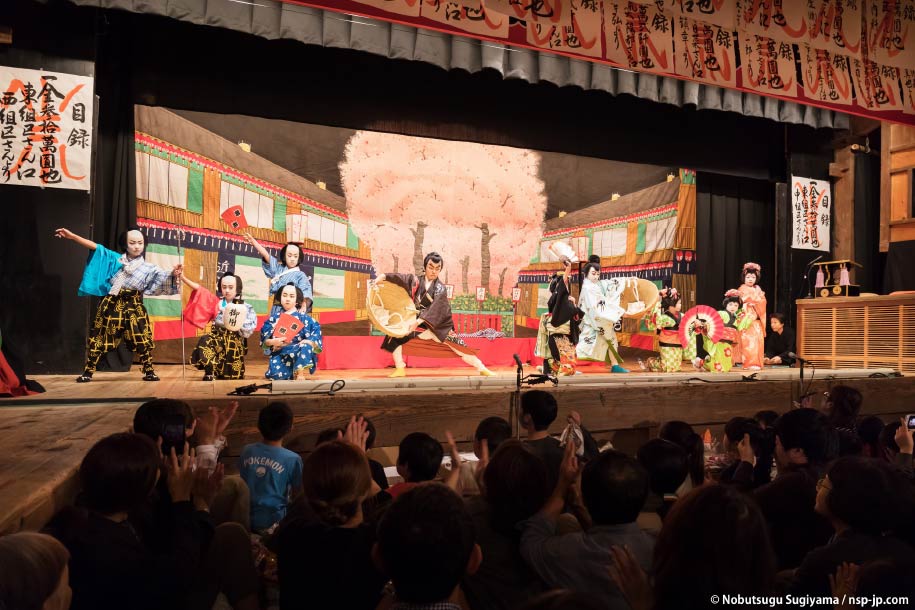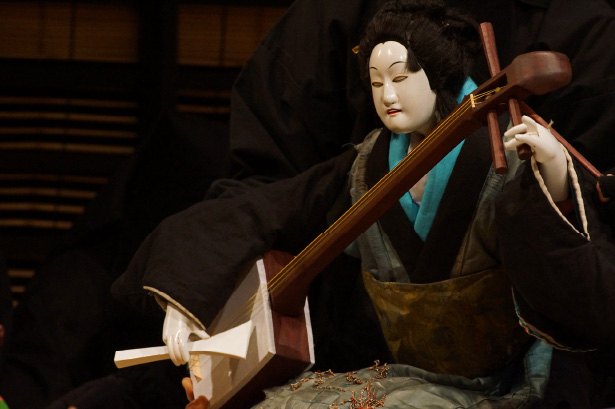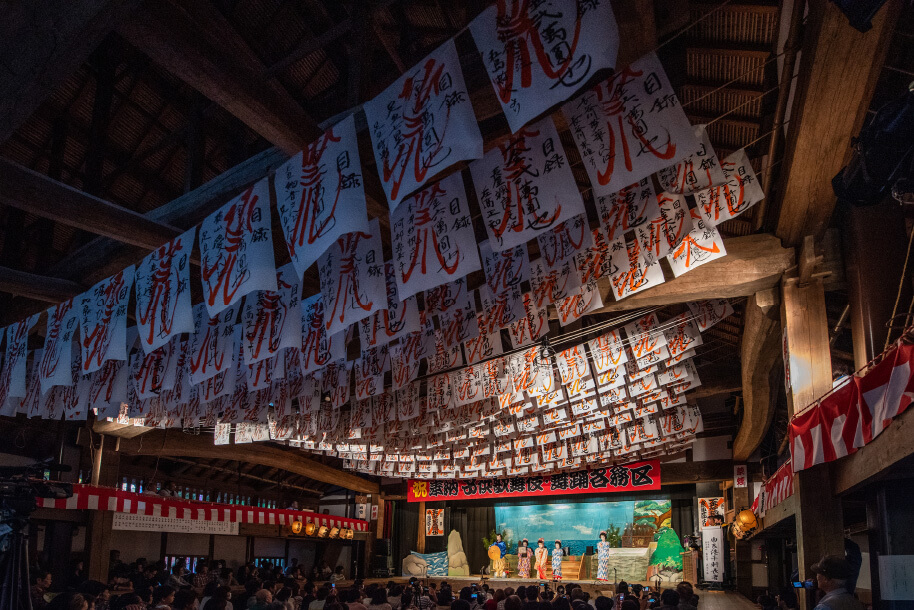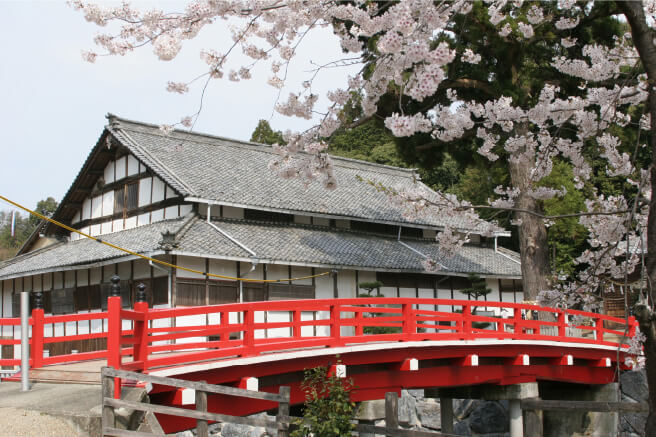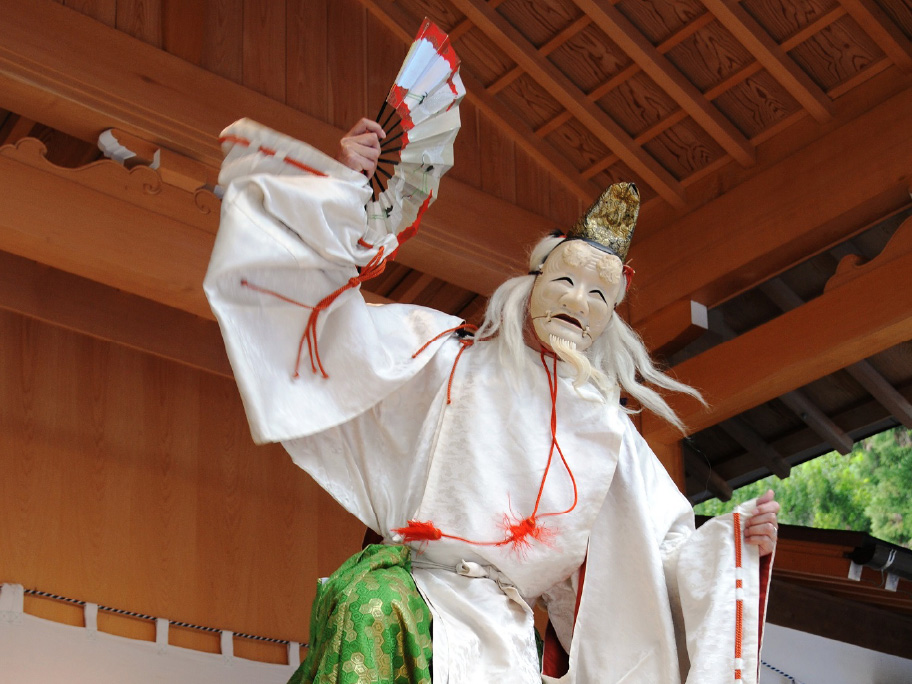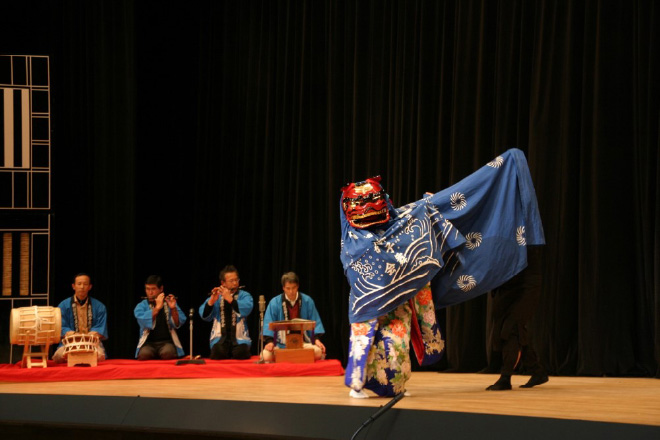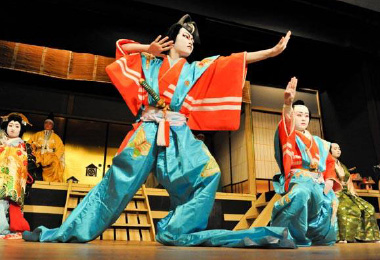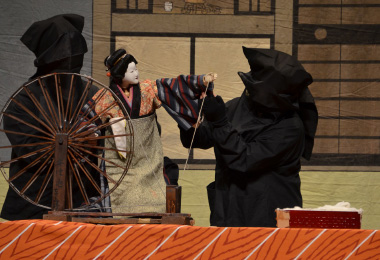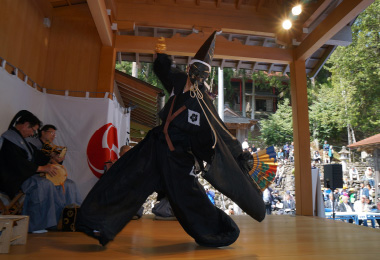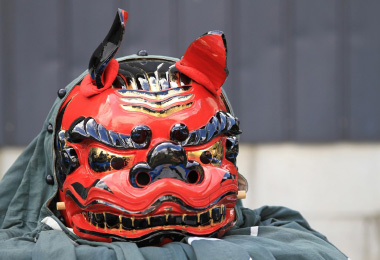Ji-shibai is a generic term for traditional Japanese plays performed by local residents, including Kabuki, Bunraku, Noh Kyogen and Shishi-shibai. The performers not only act, but also prepare everything from stage direction and choreography, makeup, and costumes to musical instruments and stage equipment. Although non-professionals, their authentic performances move their audiences to tears and laughter. Furthermore, the audience not only watches the plays - they also actively take part through "Ōmukō"*1 and "Ohineri."*2 Created by performers and the audience together, this "home-grown" Ji-shibai has attracted many fans and has become a form of traditional culture that continues to the present day.
Ōmukō*1 … A loud, timely call to a performer during a play from the audience
Ohineri* … Gift coins wrapped in paper that are thrown to performers on the stage


